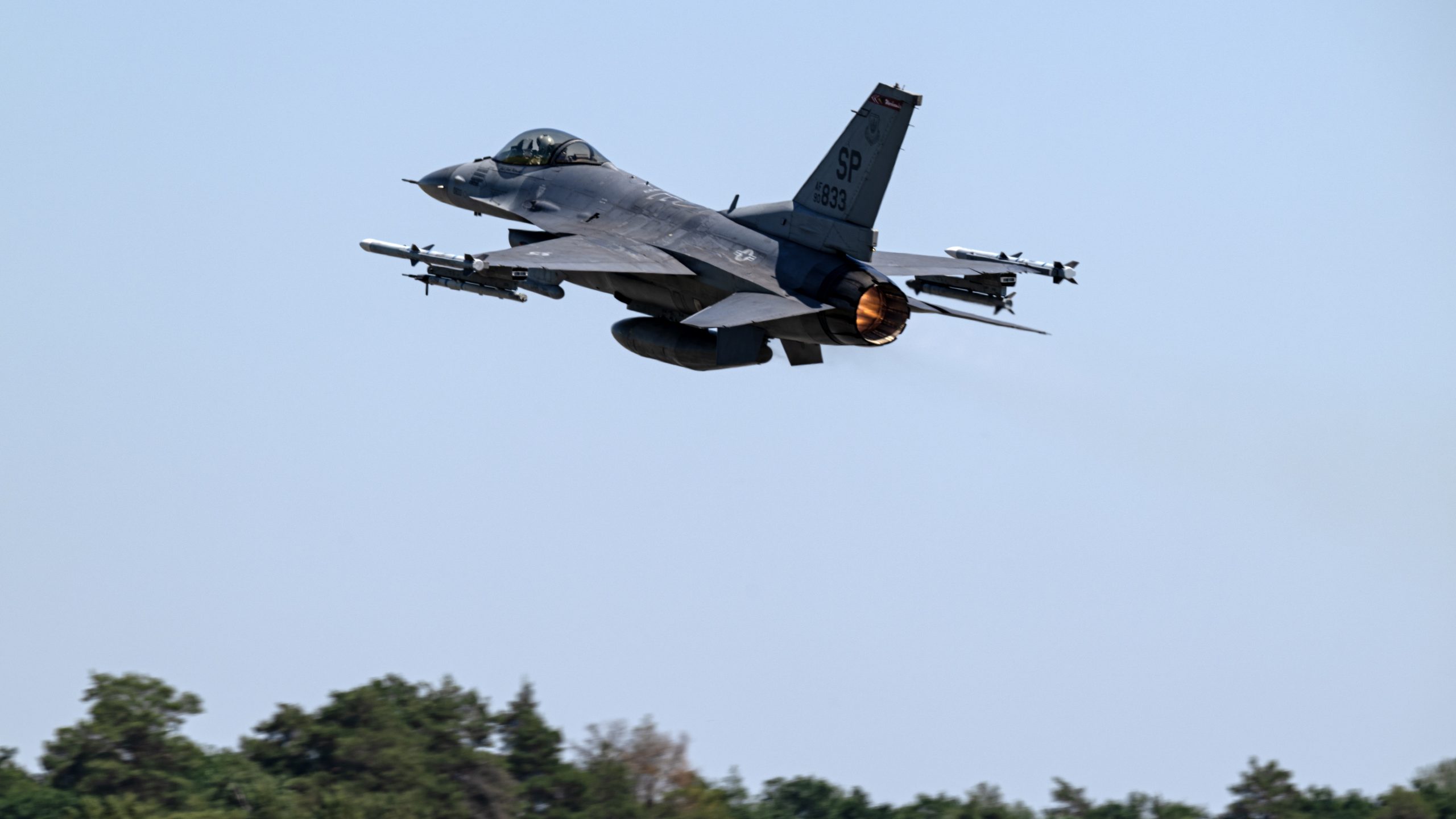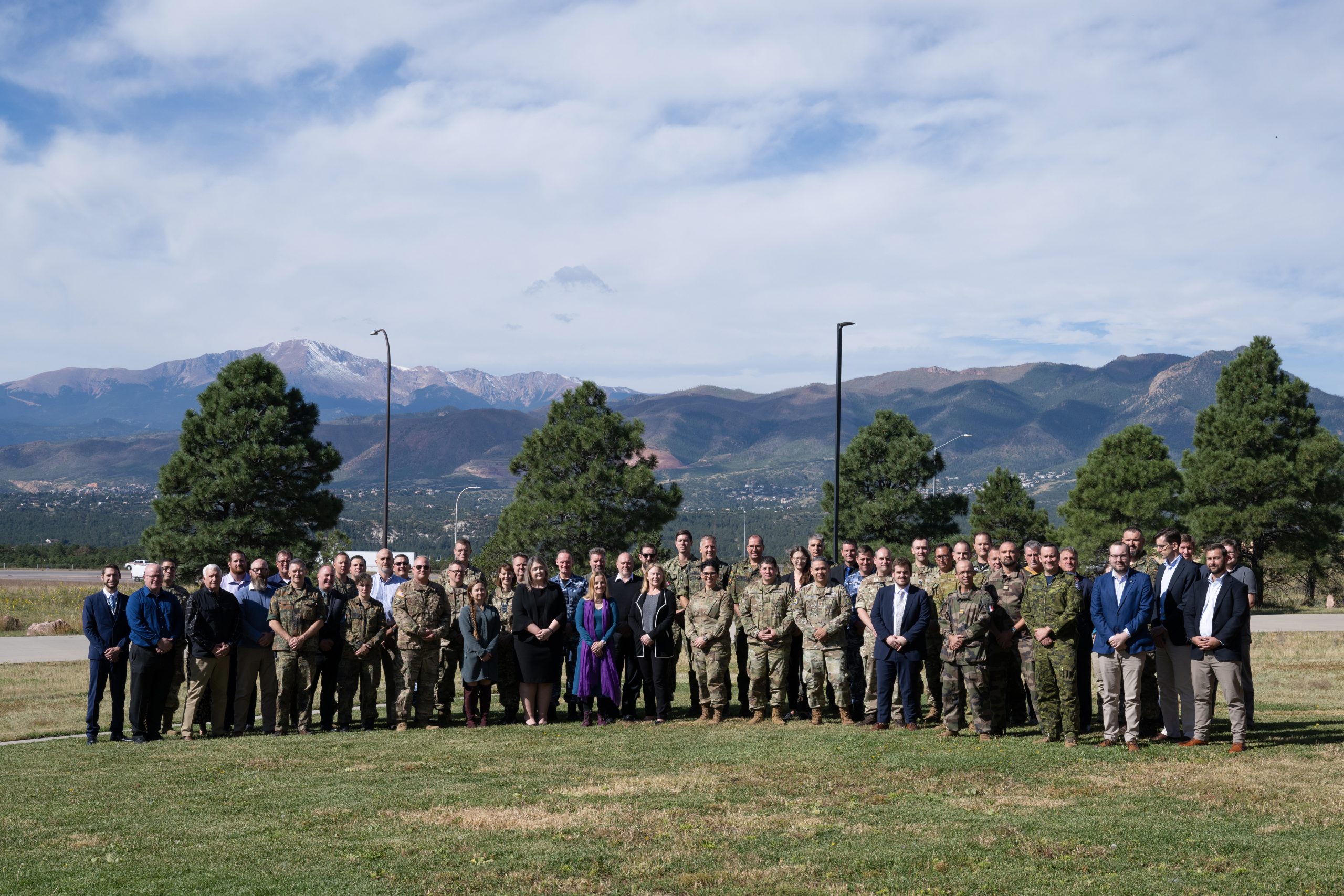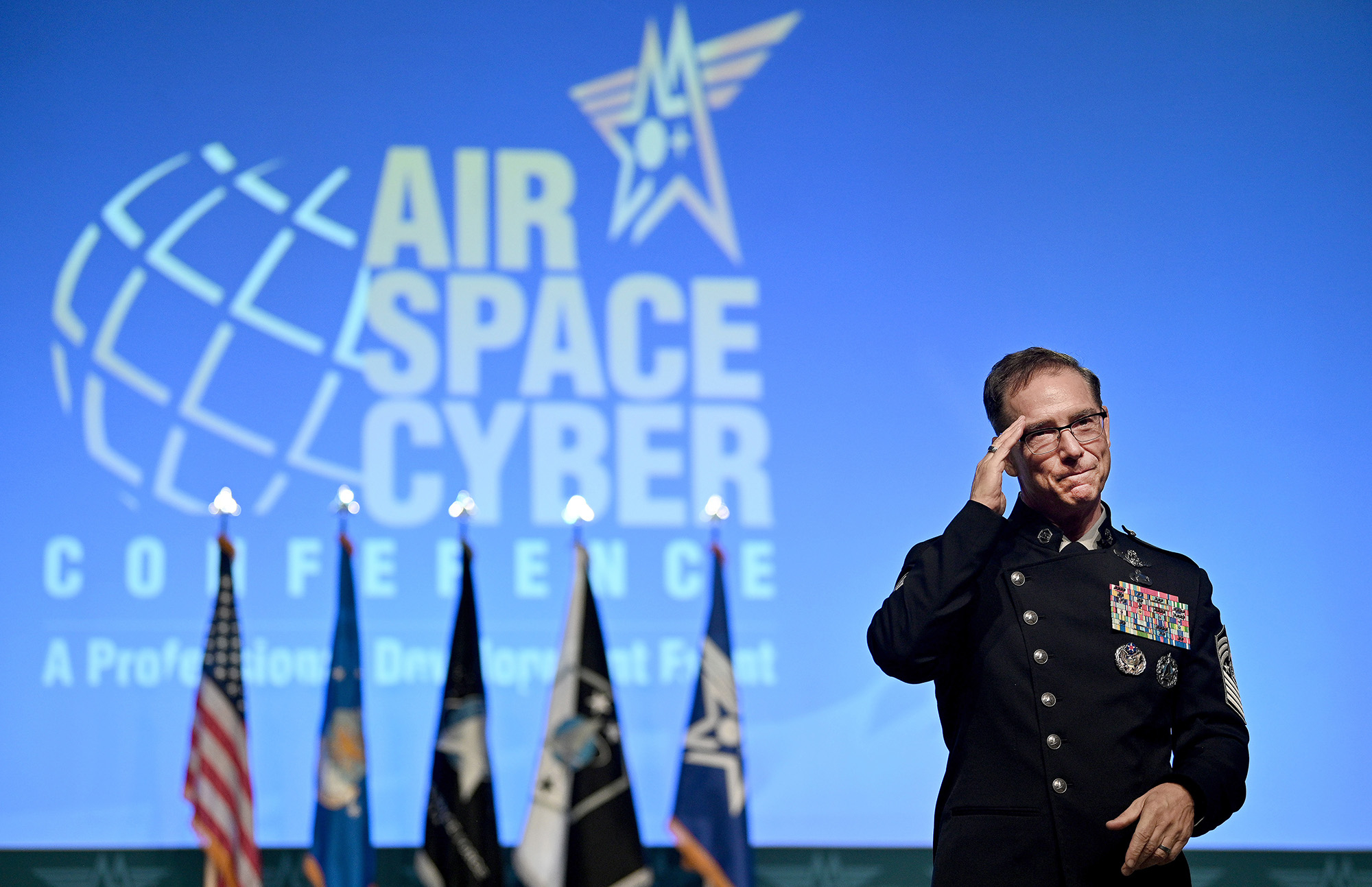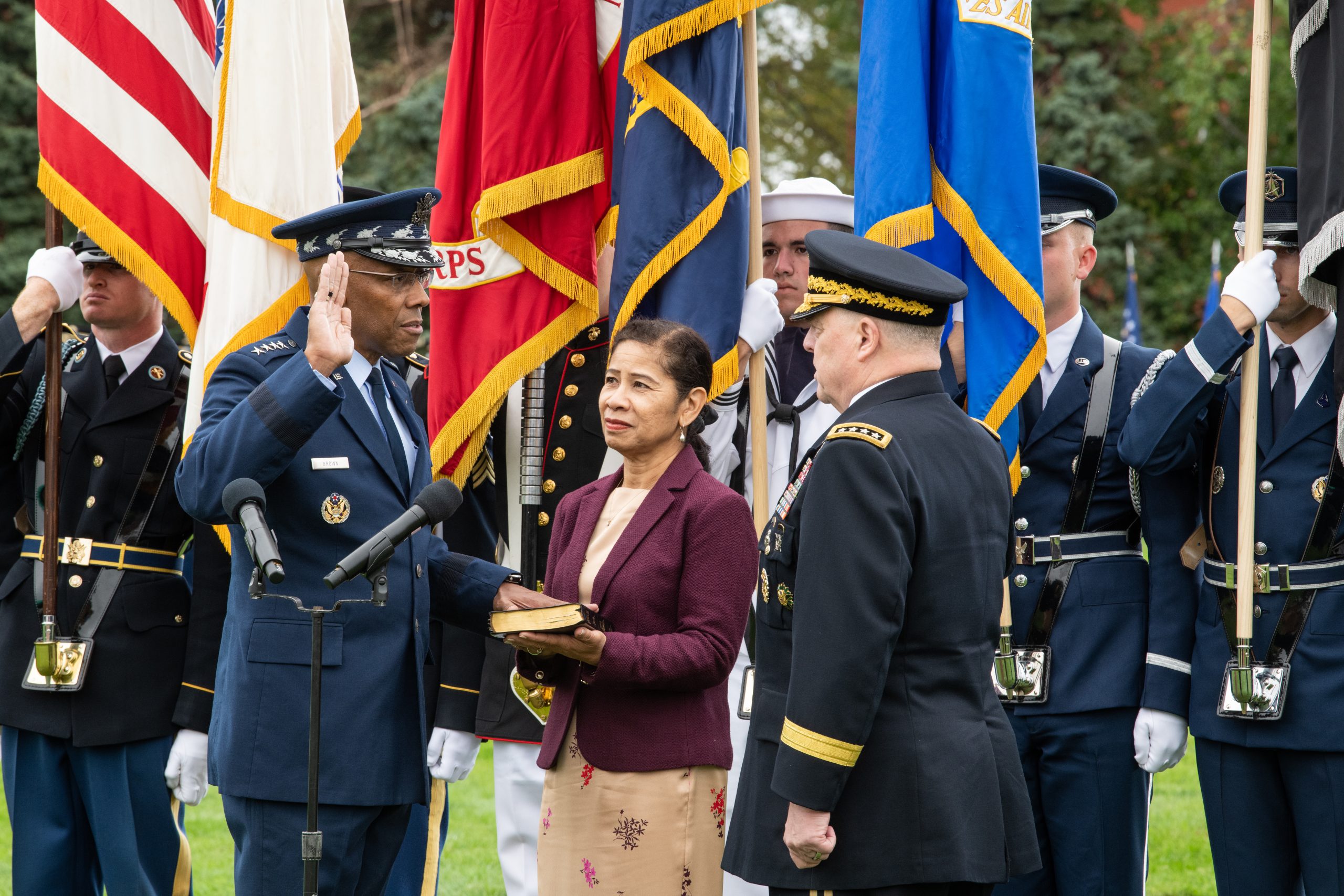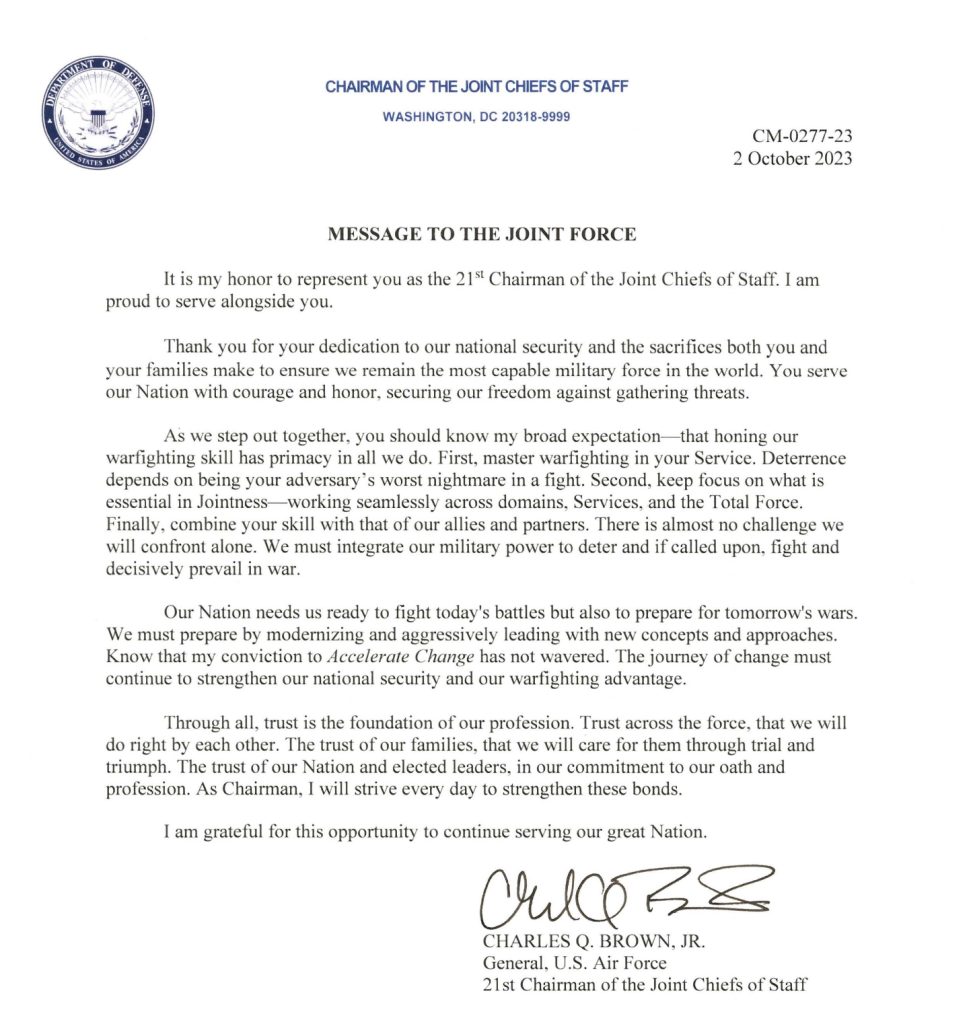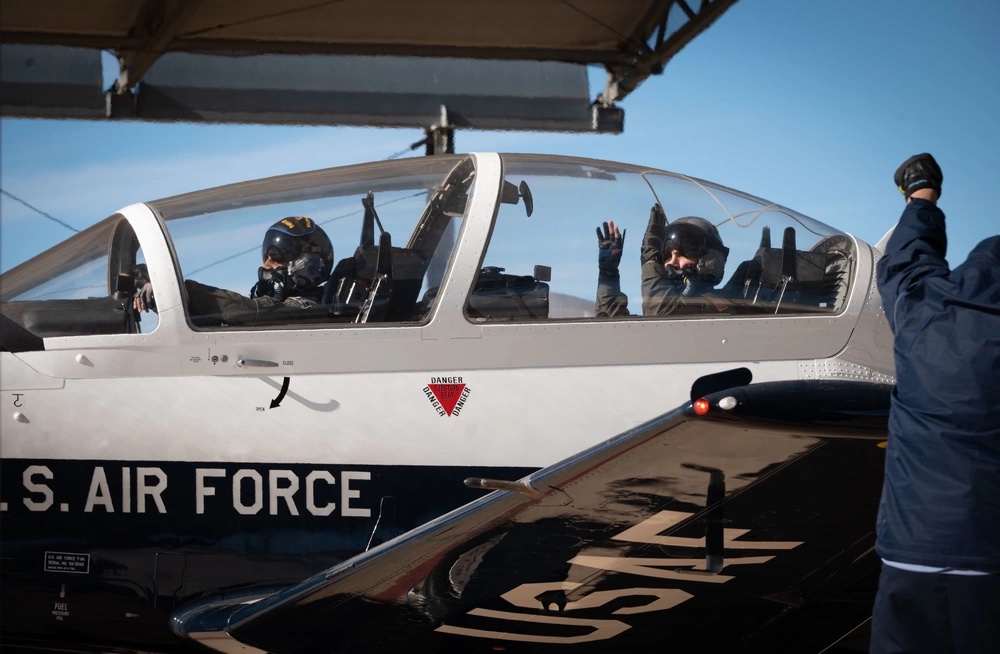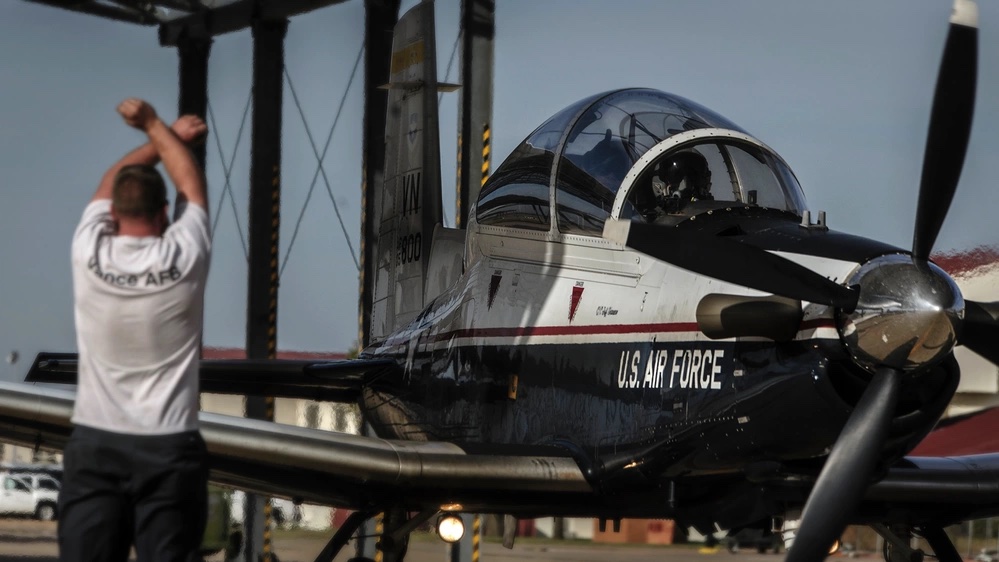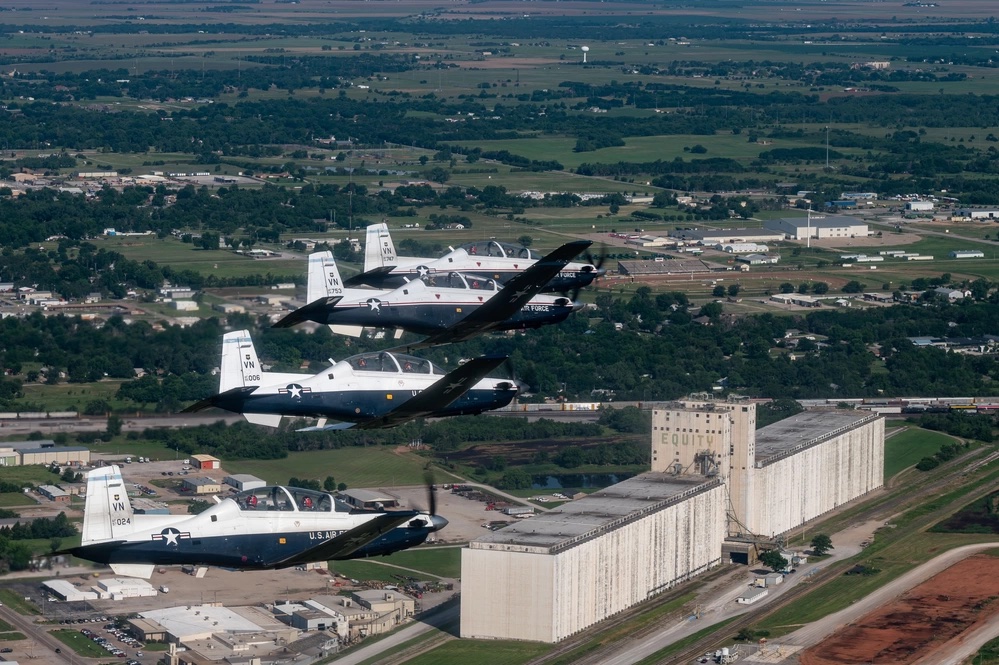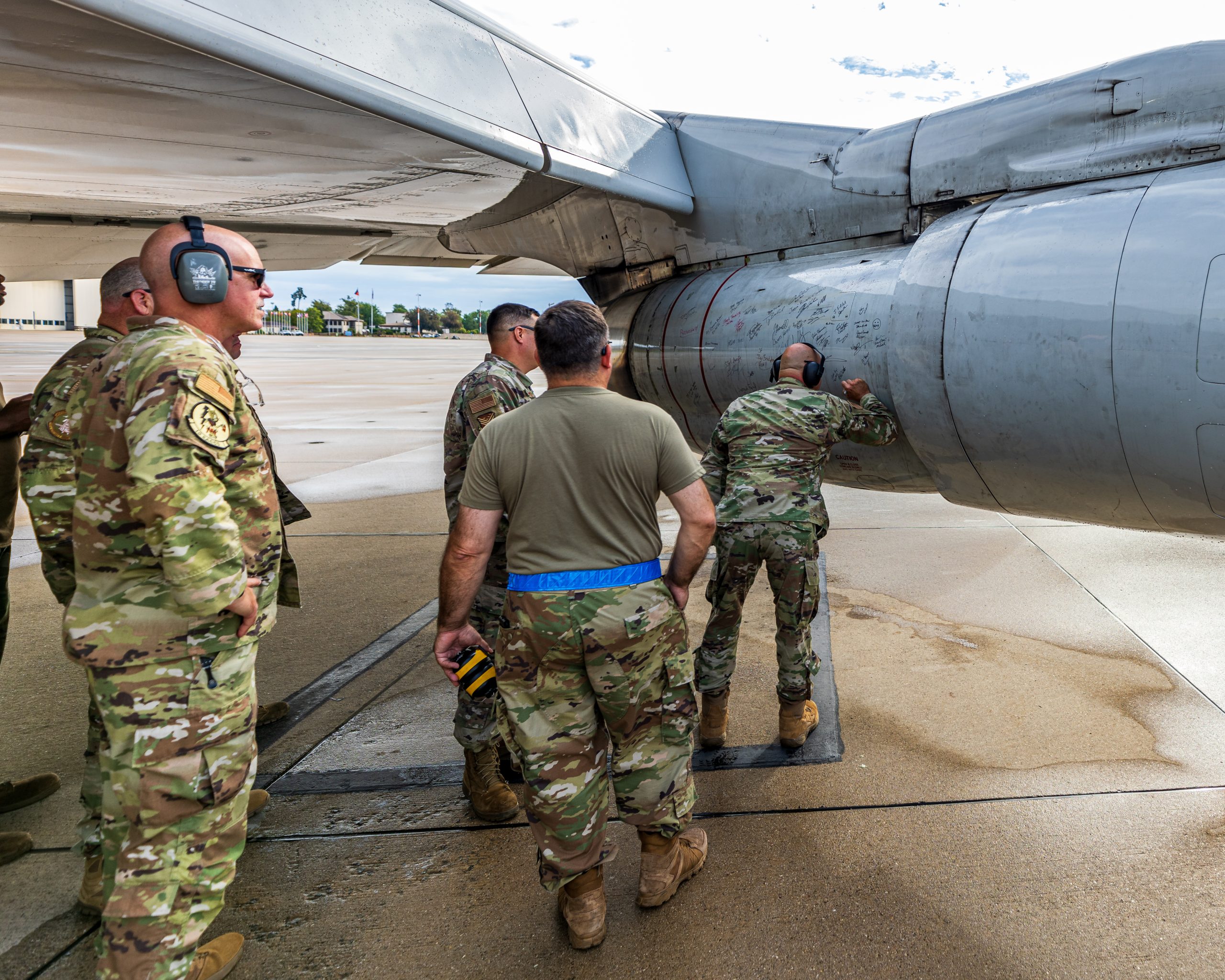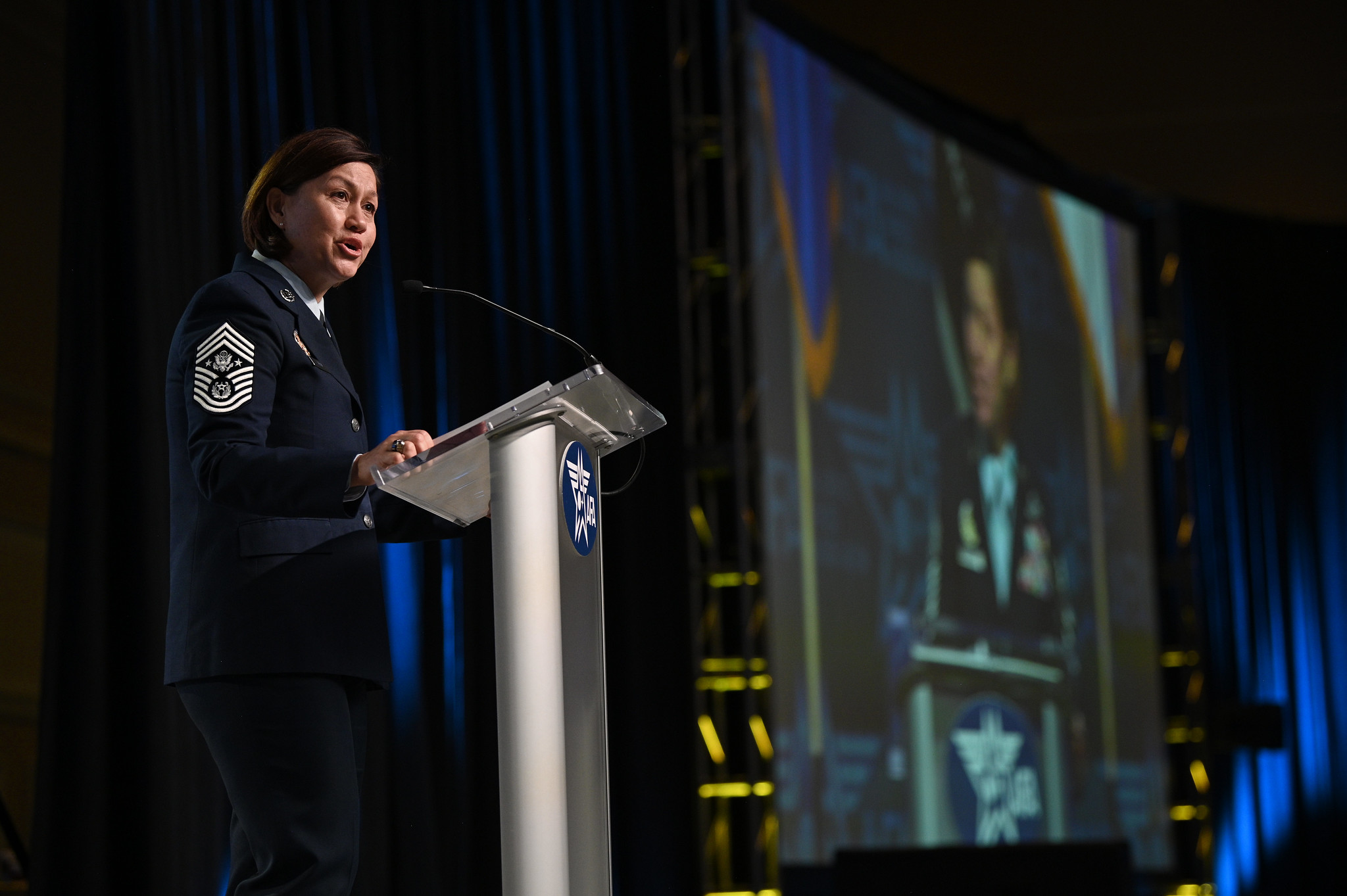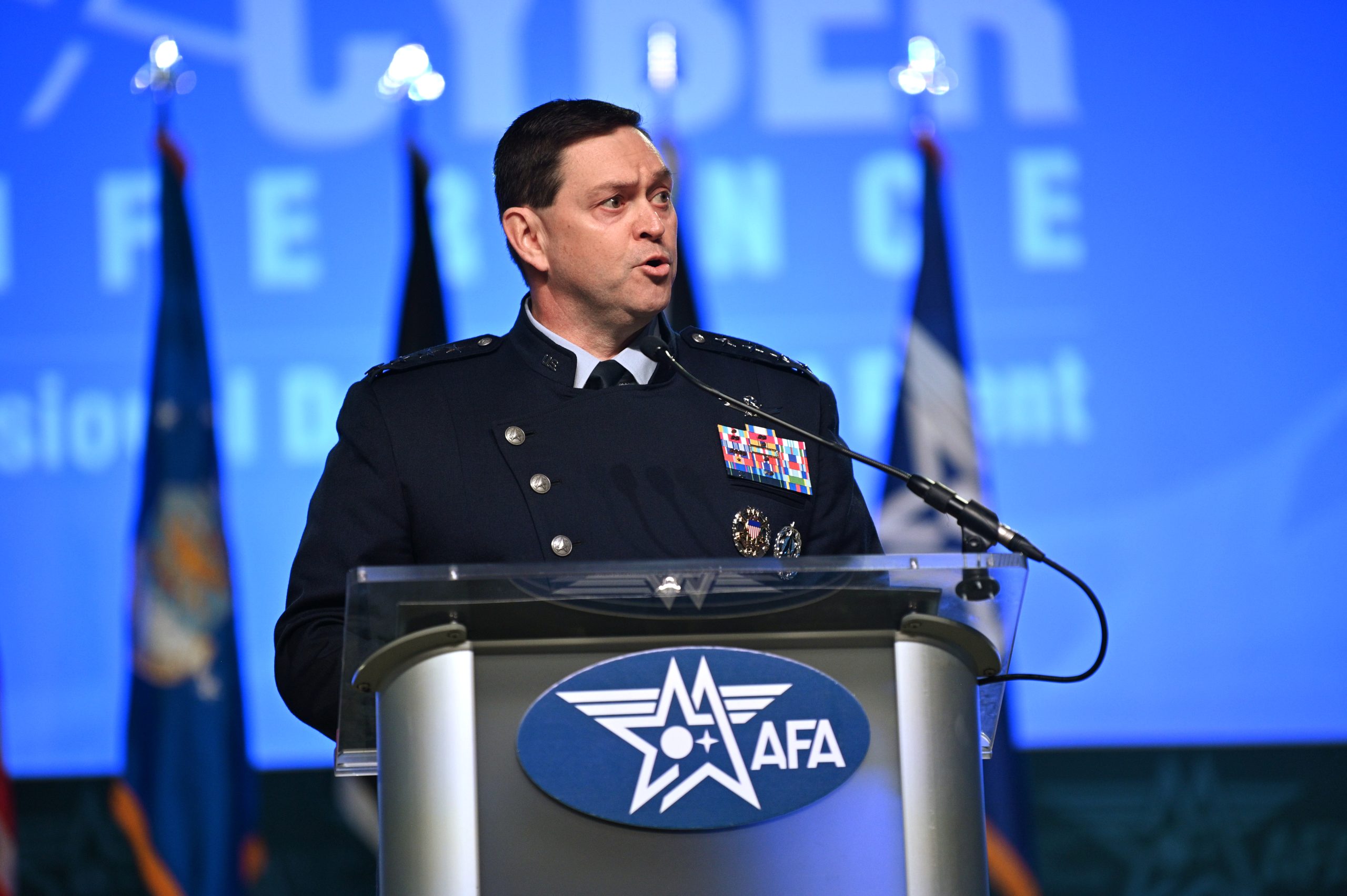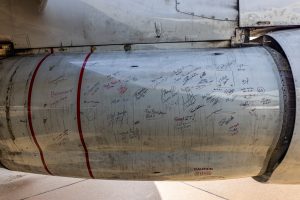
U.S. Airmen signatures on an E-8C Joint STARS aircraft engine as it sits on the flightline at Ramstein Air Force Base, Germany, Sept. 21, 2023. The JSTARS have been in service since 2002. (U.S. Air National Guard photo by Master Sgt. Jeff Rice)
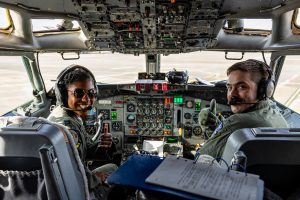
U.S. Air Force Capt. Andrea Coleman and 2nd Lt. Travis Trent, pilots with the 116th Air Control Wing, Georgia Air National Guard, give the thumbs up on an E-8C Joint STARS during its last mission at Ramstein Air Force Base, Germany, Sept. 21, 2023. The JSTARS have been in service since 2002. (U.S. Air National Guard photo by Master Sgt. Jeff Rice)

U.S. Airmen with the 116th Air Control Wing, Georgia Air National Guard, sign an engine of an E-8C Joint STARS for its last mission at Ramstein Air Force Base, Germany, Sept. 21, 2023. The JSTARS have been in service since 2002. (U.S. Air National Guard photo by Master Sgt. Jeff Rice)
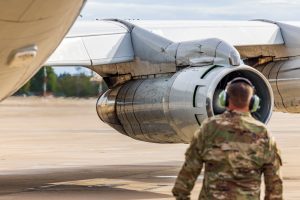
U.S. Airmen with the 116th Air Control Wing, Georgia Air National Guard, sign an engine of an E-8C Joint STARS for its last mission at Ramstein Air Force Base, Germany, Sept. 21, 2023. The JSTARS have been in service since 2002. (U.S. Air National Guard photo by Master Sgt. Jeff Rice)
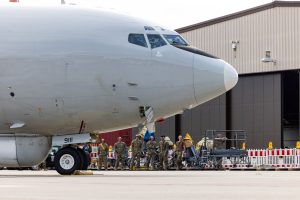
U.S. Airmen with the 116th Air Control Wing, Georgia Air National Guard, watch an E-8C Joint STARS taxi for its last mission at Ramstein Air Force Base, Germany, Sept. 21, 2023. The JSTARS have been in service since 2002. (U.S. Air National Guard photo by Master Sgt. Jeff Rice)
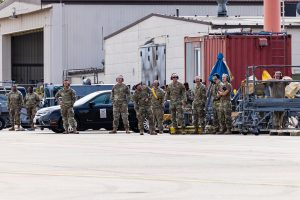
U.S. Airmen with the 116th Air Control Wing, Georgia Air National Guard, watch an E-8C Joint STARS taxi for its last mission at Ramstein Air Force Base, Germany, Sept. 21, 2023. The JSTARS have been in service since 2002. (U.S. Air National Guard photo by Master Sgt. Jeff Rice)
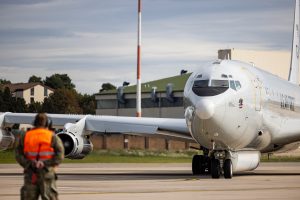
An E-8C Joint STARS aircraft taxis on the flightline at Ramstein Air Force Base, Germany, Sept. 21, 2023. The JSTARS have been in service since 2002. (U.S. Air National Guard photo by Master Sgt. Jeff Rice)
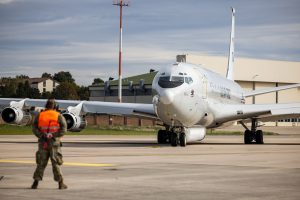
An E-8C Joint STARS aircraft taxis on the flightline at Ramstein Air Force Base, Germany, Sept. 21, 2023. The JSTARS have been in service since 2002. (U.S. Air National Guard photo by Master Sgt. Jeff Rice)
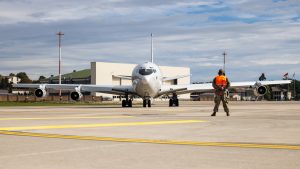
An E-8C Joint STARS aircraft taxis on the flightline at Ramstein Air Force Base, Germany, Sept. 21, 2023. The JSTARS have been in service since 2002. (U.S. Air National Guard photo by Master Sgt. Jeff Rice)
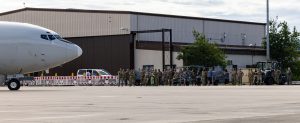
U.S. Airmen with the 116th Air Control Wing, Georgia Air National Guard, watch an E-8C Joint STARS taxi for its last mission at Ramstein Air Force Base, Germany, Sept. 21, 2023. The JSTARS have been in service since 2002. (U.S. Air National Guard photo by Master Sgt. Jeff Rice)
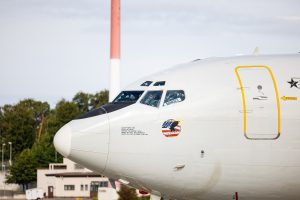
U.S. Air Force Capt. Andrea Coleman, a pilot with the 116th Air Control Wing, Georgia Air National Guard, waves from an E-8C Joint STARS during its last mission at Ramstein Air Force Base, Germany, Sept. 21, 2023. The JSTARS have been in service since 2002. (U.S. Air National Guard photo by Master Sgt. Jeff Rice)
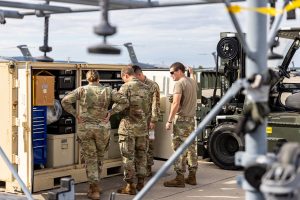
U.S. Airmen with the 116th Air Control Wing, Georgia Air National Guard, pack up gear one last time in preperation to leave from Ramstein Air Force Base, Germany, Sept. 21, 2023. This JSTARS have been in service since 2002. (U.S. Air National Guard photo by Master Sgt. Jeff Rice)
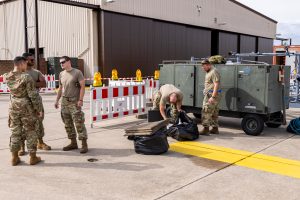
U.S. Airmen with the 116th Air Control Wing, Georgia Air National Guard, pack up gear one last time in preperation to leave from Ramstein Air Force Base, Germany, Sept. 21, 2023. This JSTARS have been in service since 2002. (U.S. Air National Guard photo by Master Sgt. Jeff Rice)
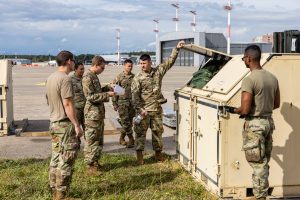
U.S. Airmen with the 116th Air Control Wing, Georgia Air National Guard, pack up gear one last time in preperation to leave from Ramstein Air Force Base, Germany, Sept. 21, 2023. This JSTARS have been in service since 2002. (U.S. Air National Guard photo by Master Sgt. Jeff Rice)
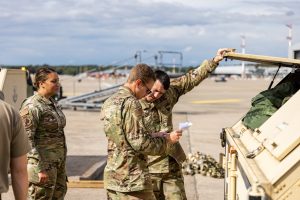
U.S. Airmen with the 116th Air Control Wing, Georgia Air National Guard, pack up gear one last time in preperation to leave from Ramstein Air Force Base, Germany, Sept. 21, 2023. This JSTARS have been in service since 2002. (U.S. Air National Guard photo by Master Sgt. Jeff Rice)
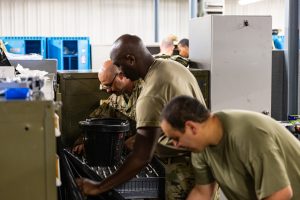
U.S. Airmen with the 116th Air Control Wing, Georgia Air National Guard, pack up gear one last time in preperation to leave from Ramstein Air Force Base, Germany, Sept. 21, 2023. This JSTARS have been in service since 2002. (U.S. Air National Guard photo by Master Sgt. Jeff Rice)
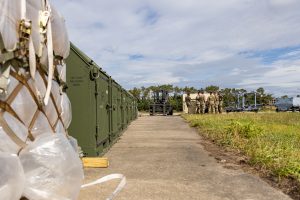
U.S. Airmen with the 116th Air Control Wing, Georgia Air National Guard, pack up gear one last time in preperation to leave from Ramstein Air Force Base, Germany, Sept. 21, 2023. This JSTARS have been in service since 2002. (U.S. Air National Guard photo by Master Sgt. Jeff Rice)
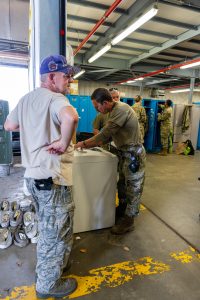
U.S. Airmen with the 116th Air Control Wing, Georgia Air National Guard, pack up gear one last time in preperation to leave from Ramstein Air Force Base, Germany, Sept. 21, 2023. This JSTARS have been in service since 2002. (U.S. Air National Guard photo by Master Sgt. Jeff Rice)
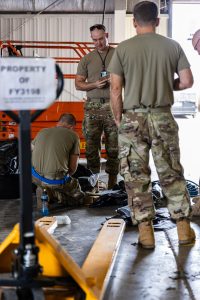
U.S. Airmen with the 116th Air Control Wing, Georgia Air National Guard, pack up gear one last time in preperation to leave from Ramstein Air Force Base, Germany, Sept. 21, 2023. This JSTARS have been in service since 2002. (U.S. Air National Guard photo by Master Sgt. Jeff Rice)
